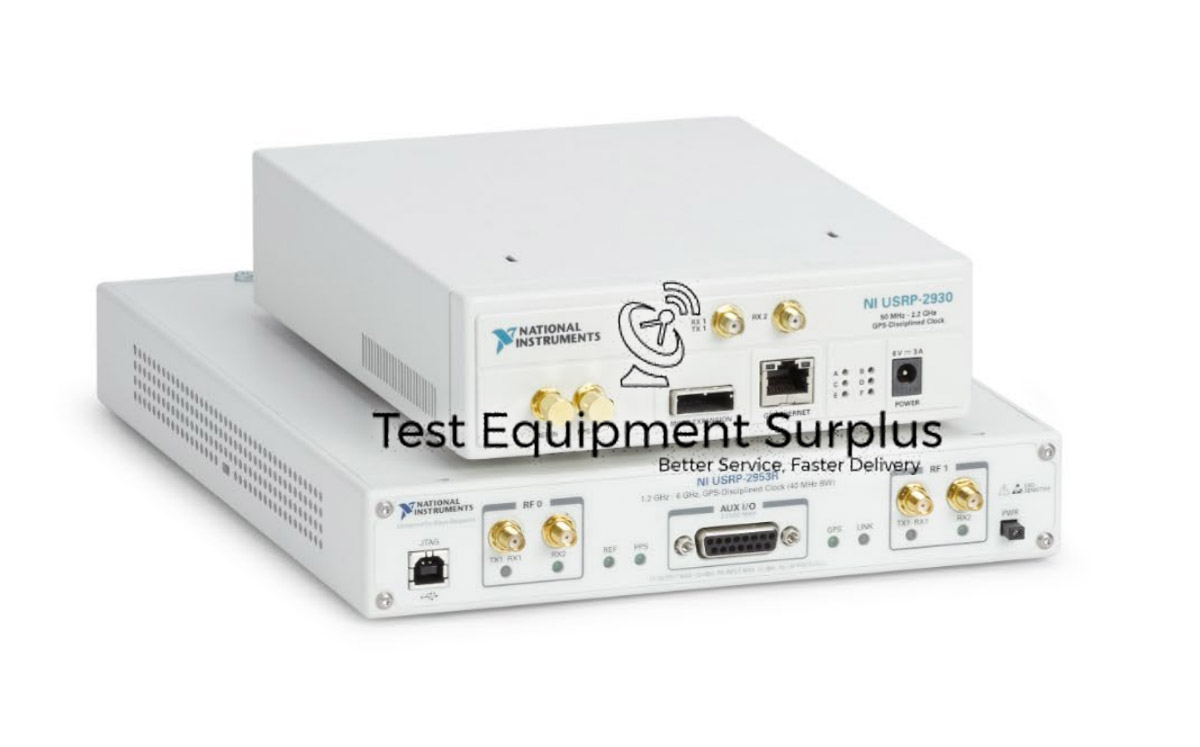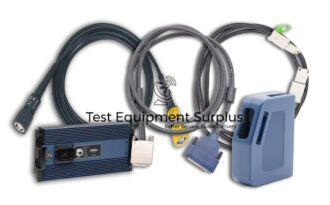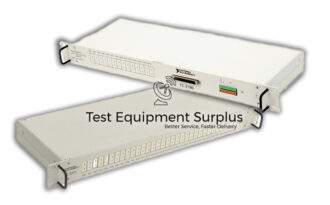Description
The National Instruments USRP-2950 is a versatile USRP Software Defined Radio Device that is identified by part numbers 783150-01 and 783926-01. This device is designed to support a wide range of applications, including MIMO, LTE relaying, spectrum sensing, RF compressive sampling, beamforming, cognitive radio, and direction-finding, thanks to its 2 input channels and 2 output channels and a frequency range of 50 MHz to 2.2 GHz. The 10 MHz GPS Disciplined OCXO reference clock enhances the precision and synchronization of the device, making it ideal for advanced research and development.
Connectivity options for the NI USRP-2950 include Ethernet and PCIe, with the PCIe port supporting a PCIe Generation 1 connection over a four-lane MXI Express cable. The device’s GPS antenna connector, labeled GPS ANT, can provide a DC 5 V output to power an active antenna, ensuring reliable GPS functionality. Additionally, the 1G/10G Ethernet port accommodates both 10G SPF+ and 1G SFP modules, offering flexibility for network connectivity.
| Specification | Detail |
|---|---|
| Product Name | National Instruments USRP-2950 |
| Part Numbers | 783150-01, 783926-01 |
| Type | USRP Software Defined Radio Device |
| Channels | 2 input channels, 2 output channels |
| Frequency Range | 50 MHz to 2.2 GHz |
| Reference Clock | 10 MHz GPS Disciplined OCXO |
| Connectivity | Ethernet, PCIe (PCIe Gen 1 connection over four-lane MXI Express cable) |
| GPS Antenna Connector | GPS ANT with DC 5 V output for active antenna |
| Ethernet Port | 1G/10G Ethernet |
| Compatible Modules | 10G SPF+ and 1G SFP modules |
| Applications | MIMO, LTE relaying, spectrum sensing, RF compressive sampling, beamforming, cognitive radio, direction-finding |
Question 1: What advanced applications can the 2×2 MIMO-capable National Instruments USRP-2950 with a frequency range of 50 MHz to 2.2 GHz support in the field of wireless research and development?
Answer 1: The National Instruments USRP-2950, with its 2×2 MIMO capability and a frequency range of 50 MHz to 2.2 GHz, can support advanced wireless research and development applications such as LTE relaying, spectrum sensing, RF compressive sampling, beamforming, cognitive radio, and direction-finding.
Question 2: What kind of applications can the National Instruments USRP-2950, with part numbers 783150-01 and 783926-01, support due to its dual input/output channels and 50 MHz to 2.2 GHz frequency range?
Answer 2: The National Instruments USRP-2950 Software Defined Radio Device boasts key features such as 2 input and 2 output channels, a frequency range of 50 MHz to 2.2 GHz, a 10 MHz GPS Disciplined OCXO reference clock for enhanced precision and synchronization, Ethernet and PCIe connectivity options, and a GPS antenna connector with a DC 5 V output to power an active antenna, all of which make it highly suitable for advanced research and development in a range of applications
Question 3: What are the key features of the National Instruments USRP-2950 Software Defined Radio Device that make it suitable for advanced research and development in various applications such as MIMO and cognitive radio?
Answer 3: The National Instruments USRP-2950 is well-suited for advanced research and development in software-defined radio applications due to its two input and two output channels, a broad frequency range of 50 MHz to 2.2 GHz, and enhanced precision from a 10 MHz GPS Disciplined OCXO reference clock. Its connectivity options include Ethernet and PCIe, with the PCIe port offering a Generation 1 connection over a four-lane MXI Express cable, and a GPS antenna connector with a
Question 4: What are the key features and connectivity options that make the National Instruments USRP-2950 an ideal device for advanced research and development in various applications such as MIMO and spectrum sensing?
Answer 4: The National Instruments USRP-2950, identified by part numbers 783150-01 and 783926-01, can support a variety of applications such as MIMO, LTE relaying, spectrum sensing, RF compressive sampling, beamforming, cognitive radio, and direction-finding, enabled by its 2 input channels and 2 output channels, along with a frequency range of 50 MHz to 2.2 GHz.
Question 5: What are the key features and connectivity options that make the National Instruments USRP-2950 a suitable choice for advanced research and development in software defined radio applications?
Answer 5: The National Instruments USRP-2950 is ideal for advanced research and development in applications like MIMO and spectrum sensing due to its key features, which include 2 input and 2 output channels, a broad frequency range from 50 MHz to 2.2 GHz, and a highly precise 10 MHz GPS Disciplined OCXO reference clock for enhanced synchronization. Its connectivity options are robust, offering Ethernet and PCIe interfaces, with the PCIe supporting a Generation 1 connection via a four-l




